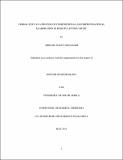| dc.description.abstract | The Bukusu community is predominantly found in Bungoma district of Western Kenya. The Litungu is a word referring to a lyre among the Bukusu community. Music accompanied by this instrument is what is referred to as Litungu music. This music makes use of sung text and “verbal-text”/ silao-sikeleko (speech and speech-melody) and silao-sikeleko is the focal point of this study. Silao-sikeleko is performed in alternation with sung text in Litungu music. This study seeks to identify the cultural and compositional role of silao-sikeleko in the music. To achieve the objectives of this study I used a qualitative approach to collect and analyze data. Data collection included the use of interviews and observation. The interviewees included performers of Litungu music, whose music was audio recorded and video recorded for analysis. In addition, I made observations of the performance sites and performance behaviour, taking notes and making audio and video recording. Music for analysis was then selected on the basis that it had the silao-sikeleko component. The Bukusu cultural view of silao-sikeleko is discussed in relation to their customs and way of life. The execution of silao-sikeleko is based on a culturally conceived framework that allows the involvement of various performers in the performance composition process. Here the contexts within which silao-sikeleko is performed are identified. Analysis of the relationship between sung text and silao-sikeleko established that whereas the two are thematically unified, silaosikeleko substantiates the sung texts by facilitating an understanding of messages contained in the songs. The analysis of language use ascertained that silao-sikeleko makes use of language devices such as proverbs, idioms, symbolism, riddles and similes. I established that silao-sikeleko as a performance compositional element has its own presentational structure that influences the overall structure of the Litungu music. Litungu music has a quasi-rondoic structure whose output is not static but varies according to context and the wishes of the soloist. The soloist interprets how effectively a given message has been communicated during performance determining how much silao-sikeleko should be performed. Silao-sikeleko is in most cases composed and performed by various members of a performing group. | en_US |

